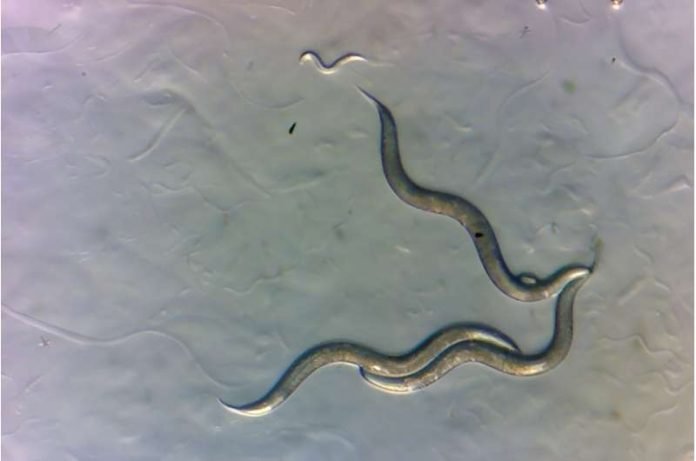
In 1986, a catastrophic event at the Chornobyl nuclear power plant sent waves of radioactive material across the nearby lands, creating what many would call the most radioactive environment on Earth.
This disaster led to the immediate evacuation of humans from the surrounding areas, leaving behind a landscape where, surprisingly, plants and animals continued to thrive despite the lingering radiation.
Almost forty years later, the region, known as the Chornobyl Exclusion Zone, is a testament to the resilience of nature.
Researchers, intrigued by how life could persist in such conditions, embarked on a study to explore the genetic impact of the radiation on local wildlife.
Their focus was on the microscopic worms called nematodes, known for their simplicity and rapid reproduction rate, making them ideal subjects for studying the basic principles of biology.
A team from New York University, led by postdoctoral associate Sophia Tintori, delved into the question of whether the harsh environment had selected for species or individuals within species that could naturally withstand the effects of radiation.
They wondered if these tiny creatures had evolved to become resistant to the damaging effects of the radioactive landscape.
Tintori and her colleagues, including Matthew Rockman, a professor of biology at NYU, ventured into the heart of the Chornobyl Exclusion Zone with Geiger counters and protective gear.
They collected nematodes from various locations within the zone, which displayed a range of radiation levels, from the negligible to the dangerously high. Their mission was to discover if exposure to radiation over generations had altered the DNA of these worms.
Back in the lab, the team studied 15 nematodes of a species known as Oscheius tipulae, comparing their genomes to those of the same species from other parts of the world.
Surprisingly, they found no evidence of radiation-induced DNA damage in the Chornobyl worms. This discovery led them to conclude that the nematodes were not only surviving but thriving in the exclusion zone without genetic harm, showcasing their incredible resilience.
However, this resilience raised further questions. The team pondered if the worms had developed mechanisms to protect or repair their DNA from radiation damage. To explore this, they compared the growth rates of worm populations and their sensitivity to DNA damage.
The results showed that while there were differences in how the worm lineages responded to DNA damage, these differences were not directly related to the levels of radiation in their environment.
This suggested that the worms from Chornobyl were not necessarily more resistant to radiation, indicating that the radioactive environment had not forced them into an evolutionary corner.
The study’s findings not only shed light on the resilience of nematodes but also opened doors to understanding the natural variation in DNA repair mechanisms across different individuals.
By identifying strains of Oscheius tipulae that were more sensitive or tolerant to DNA damage, researchers could investigate why some individuals are more affected by carcinogens than others.
This line of inquiry is particularly relevant to cancer research, as it could help unravel why some people with a genetic predisposition to cancer end up developing the disease while others do not.
In essence, the Chornobyl disaster, while a tragedy, has provided a unique opportunity to study life’s adaptability and resilience in the face of extreme environmental challenges.
The findings from this study not only deepen our understanding of how organisms can survive and evolve in hostile environments but also offer insights into the complexities of DNA repair and its implications for human health.
The research findings can be found in PNAS.
Copyright © 2024 Knowridge Science Report. All rights reserved.



